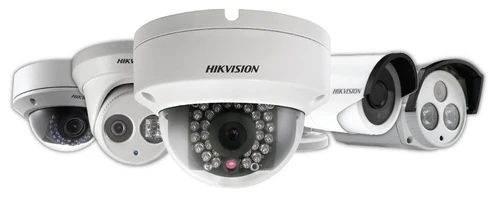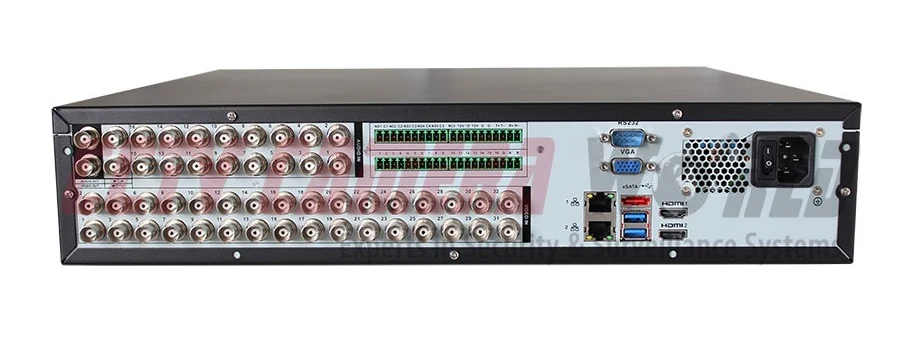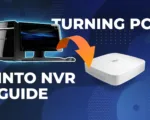The number of video recorders for security cameras presented on the market is just huge! And that’s normal because there are a lot of types and functions, made for different purposes. Although a wide selection is good, this way we can accurately select the one that we need. So, which one do you actually and accurately need? How do I select one for myself? What do those characteristics mean?
The Brand
Well, first of all, the brand – it’s better and it’s easier to just stick to your camera’s manufacturer. It’s likely (like 100% likely) that they also produce video recorders – that’s OK.
Standards & Video Recorder Difference
Item #1 to pay attention to: the standards and a video recorder. First things first – the standard. By standard, is it the IP network type, or analog cameras, cause it all starts from your camera selection. We can divide all video recorders into:
- Network Video Recorders, NVRs;
- Digital Video Recorders, DVRs;
- Hybrid Video Recorders, XVRs;
The NVR. Network Video Recorder is a storage device for videos taken on IP security cameras. Video recordings from the camera are transmitted over a network to the NVR, which writes the video data onto a hard drive installed in it. From that point you can access, view, and manage those videos from nearly any other network device like a phone, computer and etc.
Digital Video Recorder. DVR, even though it’s a part of an analog system, it is a network device too. The principle is different from an IP – analog signal from analog cameras is transmitted over coaxial cable straight to DVR, which does 2 things – decodes an analog signal into a digital signal, and that’s how we get a digital video file. Then it writes it onto the installed hard drive. Now, from there, similarly to a network system, we can access those videos from all other network devices – your phone and computer, and manage videos from there.
Hybrid Video Recorder, XVR – what’s that? As simple as it sounds, the recorder supports working with both IP Network Cameras and Analog cameras. Let’s say it’s an 8-channel XVR, where 4 channels are dedicated to analog cameras and the other 4 are made for network cameras. A rough example, but it’s here only to display a working principle. Similar to NVR and DVR, it writes all the incoming video data onto a hard drive installed in it. And it’s also a network device, too, that allows you to access, view, and manage those videos from other network devices.
Supported Cams’ Resolution & FPS
Item #2 – supported resolution and video frame rate. I suppose the most important item, directly affecting the performance of the entire video surveillance system. To obtain a high-quality, stable signal, the supported resolution in Video Recorder should be either large or equal to the resolution that your cameras have. Optimal for home video surveillance models mostly range from 4 to 6 megapixels. The frame rate of the video affects the smoothness and file size, on the other hand. For network video recorders, this indicator is designated as a bandwidth, a frame rate in other words, and it’s better to be high, which will allow you to get a high-quality frame rate with high resolution video.
The Number of Channels
Item #3 – the number of channels on a video recorder. Minor, but highly important. It’s about the number of cameras that can be connected to a video recorder at once. On a market, in most cases, this number varies from 4 to 8 to 16 to 32 and 64 channels video recorders – a binary increase. So what’s the point here – when you are selecting a Video Recorder, you should think about how many cameras will be connected to it, and ask yourself a question – do you plan to ever increase the number of cameras and apply higher resolution cameras? I mean, just try to guess this. My main point here – it is always better to select a Video Recorder with a larger number of channels than you plan right now. You’re planning 4 cameras for now – take an 8-channel video recorder, considering thatthe price will change quite a bit.
Video Storing
#4 on our list is a video storage matter. Recording of the video archive and its saving, writing onto a hard drive designed for video surveillance hard drive, which is installed inside a Video Recorder. First of all, that has to be the drives, intended specifically for video surveillance for continuous and non-stop recording, offering some really nice features for video surveillance systems. A hard drive is installed inside of Video Recorder, and all of the captured videos are saved in there. The volume and selection of a hard drive depend on the individual occasion. Depends on the number of cameras, their resolution, bitrate volume, and the number of recorded days you want to store; typically, it’s thirty days, a month. Also, that’s a type of recording: constant, motion-triggered, by a certain event, by a schedule?
Features & Specs
A finishing paragraph #5 is the possibility of connecting additional devices, other characteristics. The possibility of supporting network features is a major aspect. This allows you to monitor your devices in a live mode remotely using a tablet, phone, or computer. When selecting a Video Recorder, make sure you can connect alarm sensors, other additional security devices, and examine the presence of required ports, depending on your task. The cost of a Video Recorder is affected by the number of parameters: a supported number of channels, supported recording resolution, number of hard drives, alarm interfaces, and many other parameters, where the top one – smart AI intelligent features.
When selecting a Video Recorder, NVR, DVR, or an XVR, there are many factors and pitfalls that only professionals could have seen before, but now the fire has spread to people. We often get calls that sound like: “I just want this recorder and that’s it.” And then it turns out the person needs a completely different one for his occasion. And we get a refund. And you get a pain in the ass and wasted time. Now you know what things to look at when selecting a video recorder for your system. Or you can let professionals do it, but please don’t refuse a consultation.





















